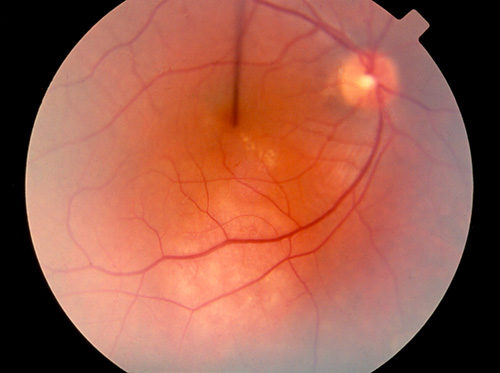Smoking and Eye Disease
Tobacco smoking is directly linked to many adverse health effects, including high blood pressure, heart disease and cancer. Smoking is also linked to specific eye disease.
How does smoking affect the eyes?
People who smoke cigarettes are at increased risk for developing cataracts, a clouding of the naturally clear lens of the eye. Cataracts cause a variety of vision problems, including blurry distance vision, sensitivity to glare, loss of contrast and difficulty seeing colors. When glasses or magnifiers are no longer helpful for someone with cataracts, or when cataracts develop in both eyes, surgery is the only option.
Tobacco smoking is also one of the preventable risk factors for age-related macular degeneration (AMD). Studies have shown that current smokers and ex-smokers are more likely to develop AMD than people who have never smoked. AMD has two forms: dry (called atrophic) AMD and wet (called exudative) AMD. In dry AMD, your retina gradually thins. There is no proven cure for this type of degenerative disease. In wet AMD, new blood vessels grow in the retina, leaking blood or fluid, damaging the macula, the part of the retina responsible for your central vision. The main treatment currently available for specific forms of wet AMD is injection of medication into the eye; laser surgery and photodynamic therapy may stabilize the disease as well. However, prevention of a disease is always superior to treatment.
In people with high blood-sugar levels, some studies suggest that smoking may be linked to diabetic retinopathy, or damage to the blood vessels in the retina. The optic nerve is also susceptible to damage from smoking. People with poor diets who smoke heavily and drink excessive amounts of alcohol run the risk of developing optic nerve-related vision loss (called tobacco-alcohol amblyopia). Certain optic nerve problems run in families (called Leber's hereditary optic neuropathy). People with this condition who smoke have increased risk of vision loss. In some patients with thyroid disease (called Graves' disease) who also have eye involvement, smoking can cause the eyes to become worse, with vision loss possible.
People who do not produce enough tears to keep their eyes comfortably lubricated have a condition called dry eye. For these people, smoking is a significant irritant, worsening the symptoms of scratchiness, stinging or burning of the eyes, and excess tearing from irritation.

Smoking is a major risk factor for macular degeneration.

Example of central vision loss due to macular degeneration.
